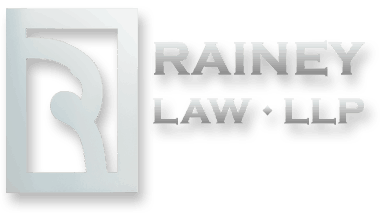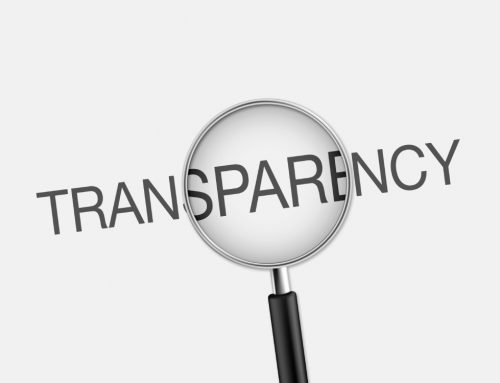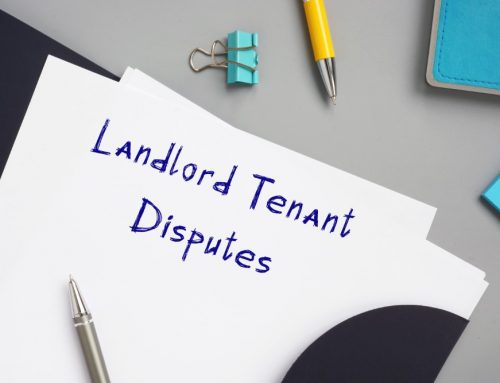Rainey Law Continues Serving Clients (with the help of technology)
 Governor Kevin Stitt recently signed an order declaring legal services as essential business. Our team at Rainey Law continues working with full remote access capabilities from home and with limited personnel in our physical offices to ensure the health of others, clients, and our team. We welcome calls, emails, video conferences, and if necessary, can accommodate in-person meetings while complying with all CDC recommended safety measures. We’re still here for your business, estate planning, and individual legal needs during these challenging times.
Governor Kevin Stitt recently signed an order declaring legal services as essential business. Our team at Rainey Law continues working with full remote access capabilities from home and with limited personnel in our physical offices to ensure the health of others, clients, and our team. We welcome calls, emails, video conferences, and if necessary, can accommodate in-person meetings while complying with all CDC recommended safety measures. We’re still here for your business, estate planning, and individual legal needs during these challenging times.
Families First Coronavirus Response Act (FFCRA or Act)
The Act signed by President Trump on March 18, 2020, requires certain employers to provide employees with paid sick leave or expanded family and medical leave for specified reasons related to COVID-19. The Department of Labor’s (Department) Wage and Hour Division (WHD) administers and enforces the new law’s paid leave requirements. These provisions will apply from April 1, 2020 (there is a 30 day non-enforcement period if you are making good faith compliance efforts, according to the IRS) through December 31, 2020.
We provide a brief summary of some of the most important provisions of the Act to help you understand how you might be impacted, whether you’re a business or an employee:
Emergency Family Medical Leave
- Employers with fewer than 500 workers will have to provide up to 12 weeks of FMLA leave for employees who have been on the job for at least 30 days, and who are unable to work or telework because they have to care for a minor child if the child’s school or place of care has been closed, or if the child care provider of that child is unavailable due to a coronavirus emergency. This is to apply even if you don’t normally otherwise have to comply with FMLA.
- An employer of an employee who is a health care provider or an emergency responder may elect to exclude the employee from the emergency family leave provisions.
- An employee who is still able to telework is not entitled to leave.
- The first 10 days of leave can be unpaid (a worker could opt to use accrued vacation days or other available paid leave for those days). For subsequent days of leave, workers will receive a benefit from their employers equal to at least two-thirds of their normal pay rate. The paid leave is capped at $200 per day and $10,000 in the aggregate.
- Generally, the employee on leave must be restored to his or her prior position; however, this requirement does not apply to employers with fewer than 25 employees if the position held by the employee on leave no longer exists due to economic conditions or other changes in the employer’s operating conditions caused by the coronavirus pandemic, and the employer makes reasonable efforts to restore the employee to an equivalent position.
- Wages required to be paid under the emergency family leave provisions will not be subject to the 6.2 percent social security payroll tax typically paid by employers on employees’ wages.
- The Department of Labor will be authorized to issue regulations to (i) exclude certain health care providers and emergency responders from paid leave benefits, and (ii) exempt small businesses with fewer than 50 employees from the paid leave requirements “when the imposition of such requirements would jeopardize the viability of the business as a going concern.”
Emergency Sick Leave
- Employers with fewer than 500 workers will have to provide employees who cannot work or telework with paid sick time off if the employee is: (i) an employee subject to a coronavirus quarantine or isolation order; (ii) an employee who has been advised by a health care provider to self-quarantine due to coronavirus concerns; (iii) an employee who is experiencing symptoms of coronavirus and is seeking a medical diagnosis; (iv) an employee caring for an individual described in (i) or (ii) above; (v) an employee caring for a child whose school or place of care is closed, or the child care provider of the child is unavailable, due to coronavirus precautions; or (vi) an employee who is experiencing any other substantially similar condition specified by HHS in consultation with the Treasury and Labor Departments.
- Employers of employees who are health care providers or emergency responders may elect to exclude those employees from the emergency sick leave provisions.
- Full-time employees are to receive 80 hours of sick leave, and part-time workers are granted leave equivalent to their average hours worked in a two-week period, with the sick leave in either instance being available for immediate use regardless of the employee’s tenure at the employer.
- Paid sick time will not carry over from year to year.
- Workers taking leave for themselves will have to be paid at least their normal wage or the applicable federal, state, or local minimum wage, whichever is greater. Workers taking time off to care for family members must be paid at two-thirds of the foregoing rate. Sick leave is capped at $511 per day and $5,110 in the aggregate for leave taken in categories (i) through (iii) described in the first bullet point above (i.e., on one’s own behalf), and capped at $200 per day and $2,000 in the aggregate for leave taken in categories (iv) through (vi) (i.e., to take care of another).
- Wages required to be paid under the emergency sick leave provisions will not be subject to the 6.2 percent social security payroll tax typically paid by employers on employees’ wages.
- Employers with existing paid leave policies will be required to provide workers with sick leave under this emergency program. An employer cannot require a worker to use any other available paid leave before using sick time.
- Employers will be prohibited from (i) requiring workers to find replacements to cover their hours during time off; or (ii) discharging or discriminating against workers for requesting paid sick leave or filing a complaint against the employer related to such.
- Employers will have to post a notice containing information regarding the emergency sick leave provisions; the Labor Department created a model notice that can be emailed to all employees (the model notice covers both emergency sick leave and emergency family medical leave)
- The Department of Labor will be authorized to issue regulations to (i) exclude certain health care providers and emergency responders from paid leave benefits, (ii) exempt small businesses with fewer than 50 employees from the paid leave requirements “when the imposition of such requirements would jeopardize the viability of the business as a going concern”, and (iii) ensure consistency between the emergency sick leave provisions and emergency family leave provisions described below.
Employer Tax Credits
- The legislation implementing the above two requirements authorizes refundable credits against the employer’s portion of payroll social security tax to fully reimburse employers for the cost of providing wages paid to employees for time off under the above two programs.
- The sick leave credit for each employee will be for wages (including qualified health plan expenses relating to those wages) of up to $511 per day while the employee is receiving paid sick leave to care for himself or herself, or $200 if caring for a family member or child whose school has closed. The credit will be limited to 10 days per employee per quarter.
- The family leave credit for each employee will be for wages (including qualified health plan expenses relating to those wages) of as much as $200 per employee per day, and $10,000 in the aggregate for all calendar quarters.
- To prevent a double benefit, employers must include the amount of credits received in their gross income.
- Amounts will be transferred to the social security and disability insurance trust funds from the general fund to cover the cost of the credits and lost wages.
- We recommend talking with your CPA regarding how all tax credits will be claimed.
The above is based on information and resources provided by the U.S. Department of Labor and its Wage and Hour Division, and should not be considered legal advice, as each business and employee’s situation is different. More information regarding the above requirements can be found at the U.S. Department of Labor Wage and Hour Division website and their frequently asked questions page regarding the Act.
We know this is an unprecedented time for both employers and employees and our team at Rainey Law is here to support you should you have questions regarding the above requirements or related issues. Don’t hesitate to call us at 405-753-1555 or email us at info@OkcLaw.com, and someone from our team will get back to you as soon as possible!





